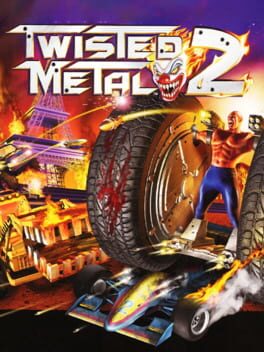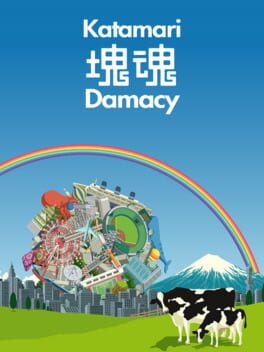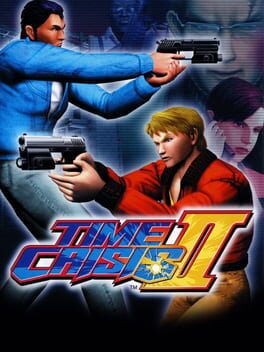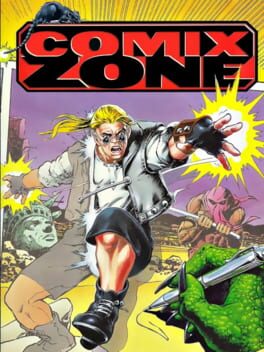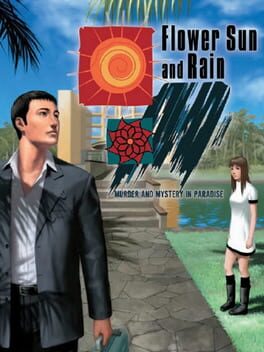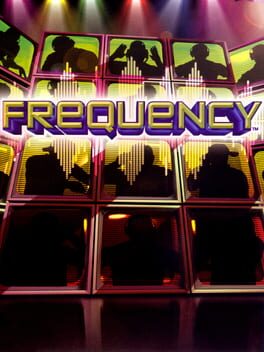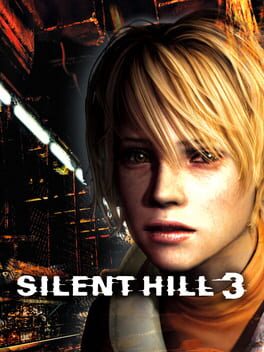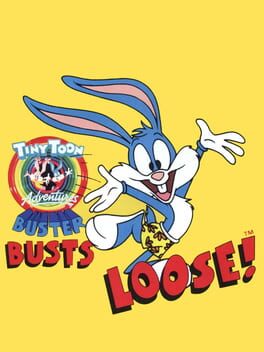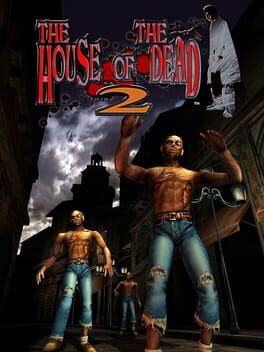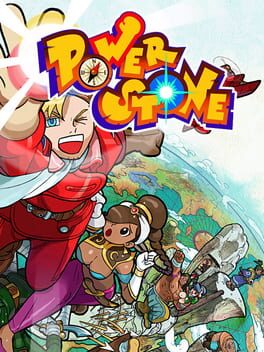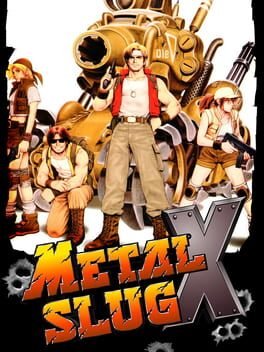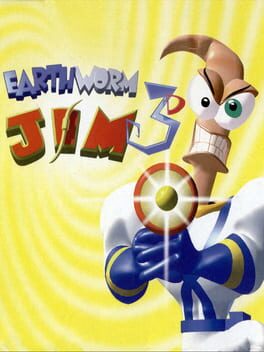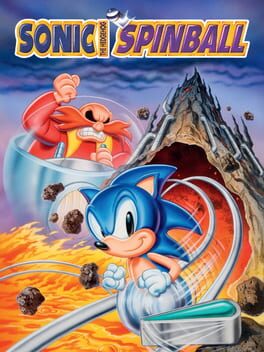2019
I was never really that big a fan of Hideo Kojima, but I definitely respected the pieces he directed to a degree. I've enjoyed the mainline Metal Gear Solid games, and I can't pretend I wasn't impressed by P.T, which is a great horror experience that respects video games as a medium in various ways. I think for the world of horror, he's got some interesting ideas. So hearing about this sci-fi horror piece, I was immediately curious, regardless of what kind of game it would end up being . . . I also remember this being the last game I was able to pre-order before Amazon ended the "20% off prime members" deal for all new and upcoming games, so I got it at launch for a good discount!
Anyway, this entire game--as far as I can tell--was a product of him trying to find his own footing once again after being ousted by Konami, who he worked within for multiple decades. And while I can imagine it took a toll on him as a creator, and already enjoyed his pieces, I was fairly disappointed in The Phantom Pain. Without going into immense detail, a lot of my problems with that game come from what was written and presented. In other words, things that have nothing to do with the game being short-sighted or meddled during production. Things that were completely Kojima's responsibility.
With that, I limited my expectations as Death Stranding got closer to release. And unlike most folks, the gameplay reveals didn't turn me off at all, it only made me more interested. The idea that a creative force is using millions of dollars from some fatcat company's wallet to make what is essentially a "hiking simulator" was really intriguing to me. And even if it didn't, I thought the sci-fi horror aspect would lend itself well enough to make it worthwhile.
Anyway, Death Stranding is something that sticks out for me, mainly because something detrimental happened to me literally the day the game launched. I won't go into detail on what exactly that was, but I was in a really deep state of depression, deeper than I've ever known before it. The feeling of absolute betrayal from someone I thought I could trust sent me to a really dark place where my mind basically went completely blank for a couple months. All while getting kicked out of my living quarters. Shit sucked!
Where people got sick of "doing nothing but walking" in this high-profile adventure game, the absolute monotony was something that spoke to me very well at the time, as my brain was merely at a complete standstill. Of course, even this game's atmosphere and arranged soundtrack got a deep reaction out of me. The vibe and even lyrics to "Asylum For the Feeling" struck a nerve once that played in a specific mission, and nearly caused me to break down. As corny as it sounds, I couldn't help but relate to the helplessness and sorrow being depicted in the song at that moment.
I guess what I'm saying is a lot of this game hit me at the perfect moment. My brain and heart was in a certain state where I cherished the time I was able to spend exploring the challenging terrain and helping with roadbuilding in order to make this server (I assume that's how it worked) better for everyone in the evenings, as I mindlessly shoveled away at my office job during the day. I like to think the raging emotions and feeling of helplessness Kojima was likely feeling at the time was the main drive to make a game like this.
So in the end, I really appreciate the gameplay and atmosphere, which are the highlights. I just wish I liked the story more. If that wasn't the weakest aspect to this game, it would get an easy 5 stars from me.
Anyway, this entire game--as far as I can tell--was a product of him trying to find his own footing once again after being ousted by Konami, who he worked within for multiple decades. And while I can imagine it took a toll on him as a creator, and already enjoyed his pieces, I was fairly disappointed in The Phantom Pain. Without going into immense detail, a lot of my problems with that game come from what was written and presented. In other words, things that have nothing to do with the game being short-sighted or meddled during production. Things that were completely Kojima's responsibility.
With that, I limited my expectations as Death Stranding got closer to release. And unlike most folks, the gameplay reveals didn't turn me off at all, it only made me more interested. The idea that a creative force is using millions of dollars from some fatcat company's wallet to make what is essentially a "hiking simulator" was really intriguing to me. And even if it didn't, I thought the sci-fi horror aspect would lend itself well enough to make it worthwhile.
Anyway, Death Stranding is something that sticks out for me, mainly because something detrimental happened to me literally the day the game launched. I won't go into detail on what exactly that was, but I was in a really deep state of depression, deeper than I've ever known before it. The feeling of absolute betrayal from someone I thought I could trust sent me to a really dark place where my mind basically went completely blank for a couple months. All while getting kicked out of my living quarters. Shit sucked!
Where people got sick of "doing nothing but walking" in this high-profile adventure game, the absolute monotony was something that spoke to me very well at the time, as my brain was merely at a complete standstill. Of course, even this game's atmosphere and arranged soundtrack got a deep reaction out of me. The vibe and even lyrics to "Asylum For the Feeling" struck a nerve once that played in a specific mission, and nearly caused me to break down. As corny as it sounds, I couldn't help but relate to the helplessness and sorrow being depicted in the song at that moment.
I guess what I'm saying is a lot of this game hit me at the perfect moment. My brain and heart was in a certain state where I cherished the time I was able to spend exploring the challenging terrain and helping with roadbuilding in order to make this server (I assume that's how it worked) better for everyone in the evenings, as I mindlessly shoveled away at my office job during the day. I like to think the raging emotions and feeling of helplessness Kojima was likely feeling at the time was the main drive to make a game like this.
So in the end, I really appreciate the gameplay and atmosphere, which are the highlights. I just wish I liked the story more. If that wasn't the weakest aspect to this game, it would get an easy 5 stars from me.
1996
A successor in every way, Twisted Metal 2 improves upon the 1995 foundation in every way! Smoother controls, more characters, and bigger stages to demolish your vehicular foes!
This is what many consider the peak of the franchise! I don't necessarily agree, but it's nice seeing a game so cherished, despite not being the best-looking game on the console, or even the smoothest. Controlling the vehicles can still be a bit cumbersome at times, and the enemy AI can be simply unrelenting (and I'm pretty sure their weapon count is meaningless whenever they decide they don't want you to win). Still, it can be a fun throwback to play, especially with a friend! The stories themselves are presented nicely, the motion comic animation was serviceable (and a pretty new style, if I'm not mistaken) and the twists we see in each driver's fate was a delight the first time around!
This is what many consider the peak of the franchise! I don't necessarily agree, but it's nice seeing a game so cherished, despite not being the best-looking game on the console, or even the smoothest. Controlling the vehicles can still be a bit cumbersome at times, and the enemy AI can be simply unrelenting (and I'm pretty sure their weapon count is meaningless whenever they decide they don't want you to win). Still, it can be a fun throwback to play, especially with a friend! The stories themselves are presented nicely, the motion comic animation was serviceable (and a pretty new style, if I'm not mistaken) and the twists we see in each driver's fate was a delight the first time around!
2004
A game that's so incredibly unique, beats to its own rhythm, and is so damn fun along the way, it's impossible to hate! Unless you're Tommy Talarico, AKA: an asshole.
Katamari Damacy is so lovingly bizarre, and it expresses that in every way possible. From the visuals, to the music, to the sound effects, to the writing, and even the controls were unlike anything seen before this! And yet, it all flows so damn well. Conceptualized by Keita Takahashi, the crew behind this game provided something that it's so off-the-walls and strange, yet it spoke to so many people back then. That includes myself, that loved showing it to anyone and everyone I can back in the day.
The fact that so many people adored this game must be why Namco pushed this series so hard for years. Either way, the experience remains the best on the Playstation 2. The recent remake is a suitable experience as well, though.
Katamari Damacy is so lovingly bizarre, and it expresses that in every way possible. From the visuals, to the music, to the sound effects, to the writing, and even the controls were unlike anything seen before this! And yet, it all flows so damn well. Conceptualized by Keita Takahashi, the crew behind this game provided something that it's so off-the-walls and strange, yet it spoke to so many people back then. That includes myself, that loved showing it to anyone and everyone I can back in the day.
The fact that so many people adored this game must be why Namco pushed this series so hard for years. Either way, the experience remains the best on the Playstation 2. The recent remake is a suitable experience as well, though.
1997
Twice the action, twice the guns, twice the arcade cabinet size, and TWICE THE PLAYERS! Time Crisis II might be one of the most literal translations when Namco gave this crew the objective "make the second Time Crisis game" as it evolved its gameplay and expanded the horizon in order to make the game big enough for two players (I bet selling those gigantic cabinets to arcades and movie theaters gave Namco a nice chunk of change too).
There's something I inherently adore about the "lone wolf" setting the original Time Crisis had, something the mainline games would never return to. So I can't help but love the original game just a tad bit more. Still, this game is awesome and feels a bit more fair with how they design the enemy attacks, giving you a decent warning to react in order to avoid getting hurt! Time Crisis II is an appropriate step-up from the original experience in the ways that really matter the most.
There's something I inherently adore about the "lone wolf" setting the original Time Crisis had, something the mainline games would never return to. So I can't help but love the original game just a tad bit more. Still, this game is awesome and feels a bit more fair with how they design the enemy attacks, giving you a decent warning to react in order to avoid getting hurt! Time Crisis II is an appropriate step-up from the original experience in the ways that really matter the most.
2011
1995
Probably the first instance of a video game portraying an analog about how an artist wants to fuck the things they draw.
I remember the first time I played Comix Zone. I was at a cousin's place for the weekend, and they had a Genesis with a mess of games. I thought the cartridge art on it looked cool, and popped it in.
I spent about 5-6 hours dying and replaying over and over again, until I eventually learned so much of its mechanics, secrets, and challenges. I managed to beat it, even attaining the "good" ending. As the credits rolled, I simply went "that stunk." And simply moved on. It's weird how much we dealt with crap when we were kids.
I occasionally revisit the game, only to be reminded that it's a clunky 2D brawler full of inconsistencies and irritating design. I respect the presentation, to a degree, I think the comic book style is pretty well done. Sound effects are nice and punchy too, as a Genesis game should be. I just don't see why it's revered as much as it is, as I don't find it fun to play at all.
I remember the first time I played Comix Zone. I was at a cousin's place for the weekend, and they had a Genesis with a mess of games. I thought the cartridge art on it looked cool, and popped it in.
I spent about 5-6 hours dying and replaying over and over again, until I eventually learned so much of its mechanics, secrets, and challenges. I managed to beat it, even attaining the "good" ending. As the credits rolled, I simply went "that stunk." And simply moved on. It's weird how much we dealt with crap when we were kids.
I occasionally revisit the game, only to be reminded that it's a clunky 2D brawler full of inconsistencies and irritating design. I respect the presentation, to a degree, I think the comic book style is pretty well done. Sound effects are nice and punchy too, as a Genesis game should be. I just don't see why it's revered as much as it is, as I don't find it fun to play at all.
A tale of a lone man trying to solve a mysterious terror attack in a land of absolute paradise. Sumio Mondo is stuck in this perpetual timeloop, but inches ever so closer to answers as these days go by. Figure out what the heck is going on (and probably still not understand) in Flower, Sun, and Rain!
Directed and mainly written by Suda51, the narrative and how it's presented is extremely alluring, and just about all of the characters have this oddball charm and quirkiness to them, and in a way that doesn't feel out-of-place at all. If any game of Suda's is inspired by David Lynch's work, it's this one. I also can't help but adore the setting itself, I love how obsessed game devs were with shores and beaches in the early 2000s, it can't get more cozy than games like this! Much of the dialogue is as hilarious as it is unique, I adore all the characters involved.
The gameplay itself is extremely minimal, as it mainly revolves around solving "puzzles" which are all numeric, and the answers are laid in a digital guide you have. If it's not stated where the answer can be found, it's up to you to solve it through context clues.
The graphical fidelity is dwarfed through this DS demake, but it still presents itself very well, and the interpreters--thankfully--did not mess with the script too much, despite how much it harks back to Suda's previous game that was only released in Japan at the time.
I expect a proper remaster of the PS2 title soon, it's something Suda51 has been very vocal about for the past few years.
Directed and mainly written by Suda51, the narrative and how it's presented is extremely alluring, and just about all of the characters have this oddball charm and quirkiness to them, and in a way that doesn't feel out-of-place at all. If any game of Suda's is inspired by David Lynch's work, it's this one. I also can't help but adore the setting itself, I love how obsessed game devs were with shores and beaches in the early 2000s, it can't get more cozy than games like this! Much of the dialogue is as hilarious as it is unique, I adore all the characters involved.
The gameplay itself is extremely minimal, as it mainly revolves around solving "puzzles" which are all numeric, and the answers are laid in a digital guide you have. If it's not stated where the answer can be found, it's up to you to solve it through context clues.
The graphical fidelity is dwarfed through this DS demake, but it still presents itself very well, and the interpreters--thankfully--did not mess with the script too much, despite how much it harks back to Suda's previous game that was only released in Japan at the time.
I expect a proper remaster of the PS2 title soon, it's something Suda51 has been very vocal about for the past few years.
2001
The Prometheus to Harmonix's future endeavors, Frequency is a great idea for a rhythm game, but implemented in a presentation so hideously garish and obtuse, you would think space aliens designed the graphics and visuals.
Frequency came from a place where Harmonix got an opportunity to work with Sony in order to provide unique, rhythmic action in a way that emulated the style of reading music sheets, while not needing the wherewithal in order to play these raving tracks for high scores! A predecessor of what's the come.
It's a very humble game with a humbling soundtrack (mostly licensed from other artists, but no huge names besides No Doubt). The sequel would flesh out the concept in a way that wasn't just more enjoyable, it also didn't look like visual nonsense.
Frequency came from a place where Harmonix got an opportunity to work with Sony in order to provide unique, rhythmic action in a way that emulated the style of reading music sheets, while not needing the wherewithal in order to play these raving tracks for high scores! A predecessor of what's the come.
It's a very humble game with a humbling soundtrack (mostly licensed from other artists, but no huge names besides No Doubt). The sequel would flesh out the concept in a way that wasn't just more enjoyable, it also didn't look like visual nonsense.
2003
An incredible sequel to the original Silent Hill on all counts. The gameplay, narrative, and presentation in Silent Hill 3 was 100% for the fans of the original game, rather than the paradigm shift we saw in Silent Hill 2, which went for a more dreary, depressing atmosphere along with more relaxed gameplay when compared to the original game. Silent Hill 2 was still scary, but Silent Hill 3 REALLY goes for your senses with its grotesque imagery and panic-inducing scenarios that'll really trigger your "fight-or-flight" response.
Like Harry proving he can fight vicious threats better than your typical S.T.A.R.S agent, Heather evolves the survivor's way of fighting even further with more options, such as strafing and blocking. The monster designs are also a sight to behold, and the puzzles are even more brain-teasing than ever! Without explaining the entire puzzle, the number pad in the hospital (on hard mode) is one I'll never forget, it was simply genius!
The story itself is also heart-rending, especially for those that experienced and understood the events of the original game. It feels like a definitive end to the series, and the performances by all of the actors are some of the best of this generation!
I guess I'll end this review saying it's funny how the "Haunted Mansion" scenario that parodied typical jumpscare bullshit in the game is what it would end up becoming shortly after this series was hocked off to the likes of Climax and Double-Helix.
Like Harry proving he can fight vicious threats better than your typical S.T.A.R.S agent, Heather evolves the survivor's way of fighting even further with more options, such as strafing and blocking. The monster designs are also a sight to behold, and the puzzles are even more brain-teasing than ever! Without explaining the entire puzzle, the number pad in the hospital (on hard mode) is one I'll never forget, it was simply genius!
The story itself is also heart-rending, especially for those that experienced and understood the events of the original game. It feels like a definitive end to the series, and the performances by all of the actors are some of the best of this generation!
I guess I'll end this review saying it's funny how the "Haunted Mansion" scenario that parodied typical jumpscare bullshit in the game is what it would end up becoming shortly after this series was hocked off to the likes of Climax and Double-Helix.
A reasonably good game, considering the sporadic quality regarding games based on pre-existing IPs back then. Buster Busts Loose is a really neat platformer that tried to ride the line of speed and careful control.
Something that holds it back, in my opinion--and something the devs couldn't help--is the fact that it's not in widescreen. Unlike Sonic, the design makes way for points where you can't react quickly enough to what's coming, so the game feels unfair more often than the more well-known blue blur of the gamingsphere.
Regardless, it feels pretty good to play and satisying to see they kind of gave a shit when it came to providing a challenging game for Tiny Toons fans. I also like how a decent chunk of the game is locked out if you choose Easy difficulty.
Something that holds it back, in my opinion--and something the devs couldn't help--is the fact that it's not in widescreen. Unlike Sonic, the design makes way for points where you can't react quickly enough to what's coming, so the game feels unfair more often than the more well-known blue blur of the gamingsphere.
Regardless, it feels pretty good to play and satisying to see they kind of gave a shit when it came to providing a challenging game for Tiny Toons fans. I also like how a decent chunk of the game is locked out if you choose Easy difficulty.
A great successor that expanded on concepts and presentation while doing some globetrotting! The House Of the Dead 2 is likely the most popular entry in the series, and that's for good reason! It's fun, fast-paced, and is teeming with a fun art style and sound design, it's always a blast to play! While SEGA was having trouble in the console department, their output in the arcade scene showed no signs of slowing down!
Of course, I can't forget that the goofy voice-acting helped make this a memorable experience as well. It's hard to say if it was lack of direction or something else, but there's mysterious sense of endearment coming from it. It almost alleviates the dreary and gory zombie-slaying experience to make it more charming and funny.
I can't wait for this to also get a garbage-ass remake.
Of course, I can't forget that the goofy voice-acting helped make this a memorable experience as well. It's hard to say if it was lack of direction or something else, but there's mysterious sense of endearment coming from it. It almost alleviates the dreary and gory zombie-slaying experience to make it more charming and funny.
I can't wait for this to also get a garbage-ass remake.
1999
A good early 3D arena brawler that might not have the deepest mechanics or refined gameplay, but damn is it full of charm!
The character designs, the triumphant music that screams adventure (fitting the theme of the game perfectly), and the clobbering action is a real delight! I have faint memories of playing this at a friend's house that got a Dreamcast pretty early, and it made me so damn jealous! It just felt so good to play! Perfect for a 9 year-old that only liked bashing buttons while bashing opponents. The single-button combos and easy-to-understand mechanics makes it a very easy game to pick up and play.
Also, can't help but notice 2 of the 3 headers on this page are from Power Stone 2, not 1.
The character designs, the triumphant music that screams adventure (fitting the theme of the game perfectly), and the clobbering action is a real delight! I have faint memories of playing this at a friend's house that got a Dreamcast pretty early, and it made me so damn jealous! It just felt so good to play! Perfect for a 9 year-old that only liked bashing buttons while bashing opponents. The single-button combos and easy-to-understand mechanics makes it a very easy game to pick up and play.
Also, can't help but notice 2 of the 3 headers on this page are from Power Stone 2, not 1.
1999
Now THIS is how you do a sequel. While I'm not entirely sure what happened with Metal Slug 2's development, I appreciated that the developers decided to remake it with a new engine they built for Metal Slug 3, and that's how you got Metal Slug X!
Compared to the original version, Metal Slug X has new enemy types, new weapon types, more dynamic confrontations with remixed enemy/weapon/vehicle spawns, and--most importantly--much more responsive gameplay that doesn't slow down nearly as much.
All-in-all, this is the most defining game in the Metal Slug series, but of course it wouldn't be until the next game that we'd receive run-n-gun arcade perfection . . .
Compared to the original version, Metal Slug X has new enemy types, new weapon types, more dynamic confrontations with remixed enemy/weapon/vehicle spawns, and--most importantly--much more responsive gameplay that doesn't slow down nearly as much.
All-in-all, this is the most defining game in the Metal Slug series, but of course it wouldn't be until the next game that we'd receive run-n-gun arcade perfection . . .
1999
The cover art is the best part of the game. Sonic Spinball is a poor attempt to work a franchise into the theme of pinball (which is weirdly common, if you ask me). The idea of being a ball that can manipulate its trajectory in a pinball game is a good idea . . . if the physics were accurate, but it's so finicky and inconsistent. Also the tables aren't that interesting either, causing frustration pretty often when you're merely looking to find the paths to clear them.
I found some satisfaction in actually taking the time to sit down and play it from beginning to end, but it's so obvious why it isn't revered as a classic, but rather a strange early point of Sonic. I imagine it wouldn't even be remembered all that well if Sega didn't constantly port it and include it in all collections regarding Sonic/Genesis games.
I found some satisfaction in actually taking the time to sit down and play it from beginning to end, but it's so obvious why it isn't revered as a classic, but rather a strange early point of Sonic. I imagine it wouldn't even be remembered all that well if Sega didn't constantly port it and include it in all collections regarding Sonic/Genesis games.

